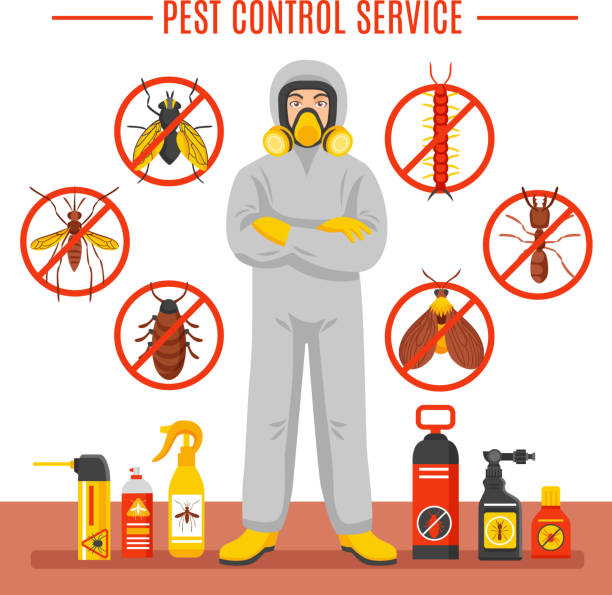Checking Out Infestation and Therapy Methods worldwide of Parasite Control
The landscape of bug control includes a myriad of obstacles, especially as infestations of usual home pests proceed to develop. Recognizing the habits and reproductive patterns of these problems is critical for developing efficient treatment methods. By incorporating preventative steps with sophisticated management techniques, such as Integrated Insect Management (IPM), homeowners can better protect their atmospheres. The efficiency of these approaches may differ considerably based on particular scenarios. What underlying variables contribute to the success or failing of these strategies in various settings?

Typical Family Pests
When it comes to handling our space, comprehending common house insects is important. These pests not just disrupt our convenience however can additionally present wellness risks and damages residential property. The most prevalent home bugs consist of ants, cockroaches, rodents, termites, and bed insects.
Ants, frequently seen foraging in cooking areas, can contaminate food and develop large colonies. Cockroaches, recognized for their resilience, can trigger allergic reactions and spread virus. Rats, consisting of computer mice and rats, can create structural damages and lug conditions like hantavirus and salmonella. Termites, usually referred to as "silent destroyers," can endanger the honesty of wood frameworks, resulting in pricey repair work. Bed insects, although not condition providers, can cause substantial pain with their bites and result in emotional distress.
Acknowledging the signs of these pests, such as droppings, nests, or attack marks, is important for very early intervention (Pest Control Lockhart). Appropriate cleanliness techniques, sealing entrance points, and maintaining a clutter-free environment are effective preventative actions. By determining these usual house parasites and understanding their behaviors, property owners can take aggressive steps to reduce invasions, guaranteeing a much healthier living atmosphere
Understanding Bug Infestations
Insect problems can rise swiftly, turning a small inconvenience into a substantial problem if not resolved promptly. Common aspects contributing to problems consist of bad sanitation, architectural susceptabilities, and seasonal adjustments that drive insects inside.
Recognizing the kind of bug is vital, as different species show varied behaviors and reproductive prices. Rats may establish nests in concealed areas while pests like roaches thrive in damp settings. Early discovery often hinges on recognizing indicators such as droppings, nibble marks, or unusual noises, which can show a problem prior to it ends up being severe.
Environmental problems additionally play a vital duty in bug spreading. Cozy, moist environments can facilitate the quick development of insect populations, while modifications in landscape design or building and construction can unintentionally produce conducive environments. Therefore, normal assessments and preventative procedures are vital to alleviating the danger of problems. An educated approach to understanding these dynamics prepares for reliable insect monitoring approaches in the future.
Therapy Approaches and Methods
Reliable treatment methods and methods are vital for mitigating bug problems and restoring a safe setting. A complex method is often best, including chemical, organic, and mechanical strategies customized to the specific parasite and the seriousness of the invasion.
Chemical therapies consist of the usage of pesticides and herbicides, which can successfully remove parasites. However, proper application and adherence to safety standards are important to minimize dangers to human beings and non-target organisms. Integrated Pest Monitoring (IPM) encourages the judicious usage of chemicals as a last hope, relying instead on surveillance and limit degrees to establish intervention needs.
Organic control approaches include presenting all-natural predators or bloodsuckers to minimize insect populaces. This method is progressively preferred, specifically in farming setups, as it promotes ecological sustainability.
Mechanical techniques, such as traps and obstacles, give immediate remedy for pests without introducing chemicals. Options include sticky traps for insects or physical obstacles for rats.
Eventually, the choice of therapy technique should think about the certain parasite, the atmosphere, and possible influence on human health and wellness and ecosystems. A well balanced combination of these techniques can successfully handle invasions while advertising lasting insect control solutions.
Preventative Procedures for Residence
Proactively resolving parasite issues before they intensify is crucial for preserving a healthy and his explanation balanced home environment (Pest Control Lockhart). Applying efficient precautionary steps can dramatically lower the possibility of problems, Recommended Reading inevitably protecting both your residential or commercial property and health

Correct landscaping also plays a crucial duty in prevention. Keeping bushes and trees trimmed away from the house decreases the possibilities of insects finding their means inside your home. Make certain that drainage systems are operating successfully to prevent standing water, which can attract in insects and other pests.
Last but not least, routine inspections are recommended. On a Learn More Here regular basis inspecting for signs of pest task enables early treatment. By taking on these preventive measures, house owners can create an environment that is much less friendly to insects, consequently improving their total lifestyle and reducing the requirement for substantial insect control interventions.
Industrial Parasite Control Strategies
An extensive method to industrial parasite control is necessary for services intending to maintain a secure and hygienic setting. Effective methods involve a mix of routine assessments, employee training, and the execution of Integrated Pest Management (IPM) techniques.
Normal inspections enable early detection of bug task, permitting prompt treatment. Companies must establish a routine schedule for these assessments, concentrating on high-risk locations such as kitchen areas, storage rooms, and waste disposal websites. Worker training is similarly essential; personnel needs to be educated on the indicators of parasite infestations and the importance of reporting them promptly.
Applying IPM techniques aids reduce pest issues sustainably. This consists of habitat alteration, such as securing entrance points and minimizing clutter, as well as utilizing all-natural deterrents prior to resorting to chemical treatments.

In addition, working together with a licensed pest control copyright ensures accessibility to professional understanding and advanced treatment alternatives. This collaboration can result in customized parasite control prepares customized to the certain requirements of the company, reducing dangers and boosting general effectiveness. Inevitably, a proactive and informed approach fosters a pest-free environment, safeguarding both public health and organization online reputation.
Verdict
Finally, efficient bug control demands a thorough understanding of typical home bugs and their habits, paired with targeted treatment methods. Executing preventative measures along with therapy methods such as Integrated Parasite Monitoring and biological control boosts the capability to minimize invasions. Routine assessments and a combination of chemical and mechanical options better add to maintaining pest-free atmospheres. Inevitably, a well-rounded strategy to pest administration is vital for safeguarding living rooms from undesirable trespassers.